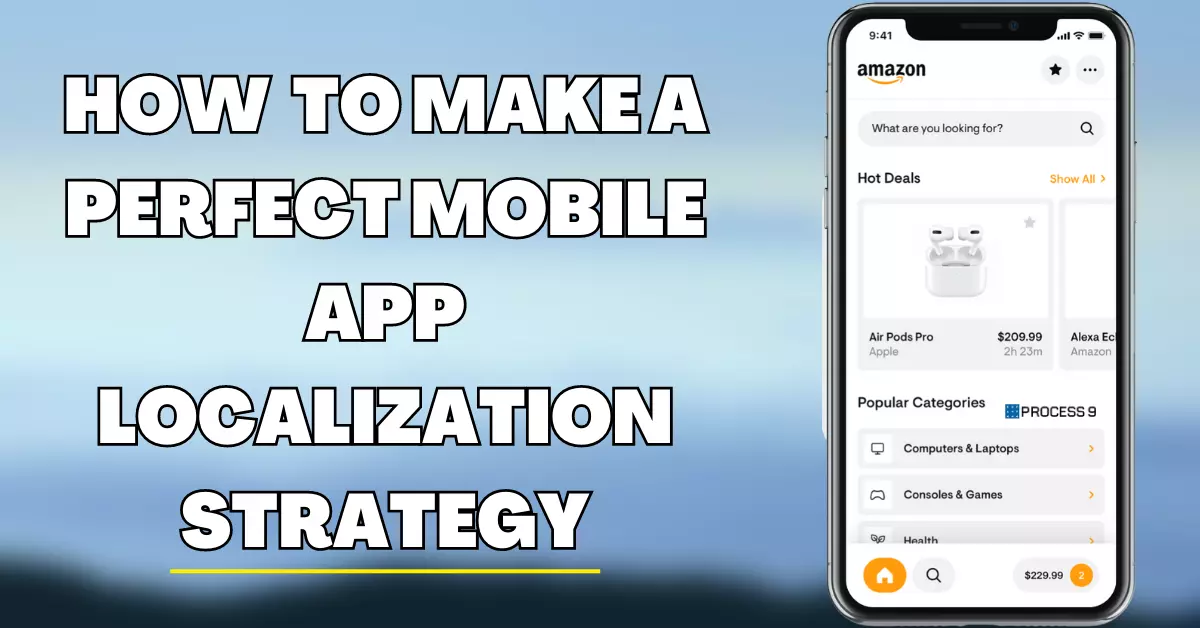The digital marketplace is currently going through a language-first era. There are many studies and use cases that prove that the internet is dominated by users who prefer to consume their content in a language of their choice. With the smartphone market expected to grow to 175 million in 2023, it wouldn’t be surprising if mobile app development and localization efforts need to be handled parallelly in order to garner the maximum market share. This year the experts in the localization industry are looking into innovation-driven strategies that would enable businesses to make future-ready decisions. Let us discuss some of the key challenges and promising strategies for mobile app localization in 2023.
What are the common challenges in mobile app localization?
Most of the time, mobile application development and app localization used to run in separate tracks of a technology workflow. When the localization setup is entirely different from the agile development framework, it can result in many issues like delay in the launch of the app or release of new features. The communication barrier between the development team, localization team, and the business stakeholders can potentially result in loss of time, money, productivity, and quality of the final output.
The lack of proper planning can make the mobile app localization efforts go haywire and result in unforeseen delays and extra costs. Many mobile applications are not built to support multiple languages. The application design contains many hardcoded elements and this can hinder a smooth localization process. If non-textual and graphic elements are not taken into consideration for localization at the time of application design, it can lead to major quality issues.
The source strings and the translated strings should be checked for any quality issues before the launch of the application. Many issues such as poor quality translations, mistranslations, and incomprehensible texts when noticed post-launch can tamper the reputation of the application.
Identifying the right localization platform is the key to the effective localization of any digital asset. The inability to identify the right platform can result in a poor localization workflow can result in delays and extra costs, which can in turn result in a delayed launch of the mobile application.
How to choose the right mobile app localization platform?
An ideal mobile app localization platform should entail the following features.
- An inbuilt translation memory allows translated content to be reused, saving time and cost over having to translate each piece from scratch.
- A unified localization platform where all the key stakeholders can work together and stay on the same page in the localization process.
- An inbuilt glossary for a consistent translation workflow.
- Automation of tasks associated with mobile app localization like extraction of input strings, management of localization workflow, performance monitoring, etc
- Support various file formats, developmental frameworks, tech stacks, architectures, CSS platforms, etc.
- Ability to update translations automatically Ability to update new translations instantly and automatically.
The entire localization process will be highly benefited if you choose the right language technology platform. Using the right platform the entire project can be effortlessly streamlined and handled from a single dashboard. The success of a localization project depends on how effective the cross-team collaboration is with various stakeholders of the project. With the help of the right platform, you can seamlessly communicate with all the project members, and using a centralized information repository the entire project management becomes hassle-free. An ideal localization platform would also help in maintaining consistent translation quality, effective support, and maintenance, as well as precise tracking of ROI.
How to structure your mobile app for easy localization?
The following tips can be incorporated into the mobile app early on for easy localization.
- Keep your app’s design flexible enough to accommodate different languages.
- Ensure that various font styles and language directions are supported by the mobile app.
- Avoid any possible breaks in the app’s design and accommodate the app’s string structure for pluralization.
- Do not hardcode elements in the application such as date, time, number, currency formats, etc.
- Store the app strings in the resource file before deploying the code for easy access.
MoxVeda from Process Nine for launching your multilanguage mobile app.
The MoxVeda technology from Process Nine allows you to localize every element of your mobile application while ensuring a perfect balance between translation and transliteration. With its best-in-class technology, MoxVeda can be deployed both on-premises and in the cloud.
Connect with our localization experts today to know more!
You may also like:- Best Website Localization Strategy







Share: